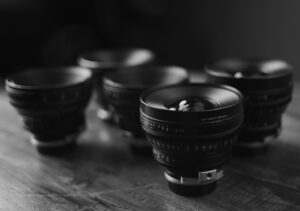If you’re shopping for a new lens, you’ve probably heard people talk about sharpness, clarity, and optical quality. But what do those terms really mean, and how can you tell if a lens is worth the price? This guide breaks down the key factors that affect how sharp and clean your images look, from physical lens design to invisible elements like coatings and construction. Whether you’re a beginner or upgrading from your kit lens, understanding lens sharpness and quality will help you make smarter choices.
If you need a refresher on the technical terms, check my lens terminology guide first.
TL;DR
- Lens sharpness refers to how much detail a lens can resolve, especially in the center and corners of an image.
- Optical flaws like chromatic aberration, barrel distortion, and vignetting can reduce image quality.
- Lens coatings help reduce lens flare, ghosting, and improve contrast, even in bright or backlit scenes.
- You don’t need lab tests: reviewing sample images, watching comparison videos, and reading user reviews can reveal real-world performance.
- Not all lenses are perfect, and that’s okay. Focus on what matters for your style and budget.
This post is just one part of my “Lens Buying Guide“, which you can download as a pdf file right now.
1. What Is Lens Sharpness and Why It Matters
Sharpness refers to the level of fine detail a lens can resolve. A sharper lens produces cleaner, crisper images, especially noticeable when zoomed in or when printing large. But not all sharpness is created equal.
- Center sharpness is how detailed the image looks in the middle of the frame.
- Edge and corner sharpness refers to the outer areas. Cheaper lenses often fall off in sharpness toward the edges.
- Prime lenses are often sharper than zooms at the same price point.
- High-end zooms (like f2.8 constant aperture pro lenses) are designed to minimize this fall-off.
Tip: You’ll usually notice lack of sharpness most at wide apertures (f1.4, f1.8). Stopping down to f2.8 or f4 often improves sharpness.
2. Lens Distortion, Chromatic Aberration, and Other Optical Issues
Even good lenses can have flaws. Here are some common ones and what they mean:
- Chromatic Aberration (CA): Colored fringes -usually purple or green- around high-contrast edges (like tree branches against the sky). Often seen in cheaper lenses, but most photo editors can reduce or remove it.
- Vignetting: Darkening of the corners at wide apertures. Can sometimes be used creatively, but usually avoided for landscapes or product shots.
- Barrel or Pincushion Distortion: Lines that should be straight (like walls or horizons) appear curved. This is common in wide-angle zooms, but correctable in software.
- Flare and Ghosting: Light artifacts and reduced contrast when shooting into bright light (like the sun). Quality lens coatings help reduce this.
- Focus Breathing: A change in the field of view when adjusting focus, important for video shooters. Not all lenses handle this well.
3. How Lens Coatings Improve Image Quality and Reduce Flare
Modern lenses use advanced coatings (like multi-coating or nano-coating) to reduce reflections, improve contrast, and control flare. You may not notice the coating directly, but you’ll definitely notice the difference in image quality when they’re missing.
4. How to Test and Compare Lens Performance (Even Online)
You don’t have to be a lens geek to make smart choices. Here’s how to quickly assess whether a lens is optically solid:
- Read lens reviews from trusted sources like DPReview, or YouTube reviewers with side-by-side comparisons.
- Look for sample photos at wide and narrow apertures.
- Search for MTF charts (if you’re advanced). They graphically show how sharpness varies across the frame.
- Check user reviews, especially complaints about softness, focus inconsistency, or chromatic issues.
The type of lens you choose can affect sharpness. Here’s a rundown of the main lens types.
5. Final Thought: Perfection vs. Practicality
No lens is perfect. And that’s okay.
Sometimes a lens with minor flaws still produces gorgeous, character-rich images. Just make sure you understand what you’re getting, and whether those trade-offs affect your style of shooting. In the end, a lens you love using is often better than one that scores perfectly on paper.
Reminder: This post is just one part of my “Lens Buying Guide“, which you can download as a pdf file right now.
Last Words
A sharp, high-quality lens can completely change the look of your photos or videos. But that doesn’t mean you need the most expensive option out there. By understanding what affects sharpness, recognizing common optical flaws, and learning how to spot real quality, you’ll be able to choose the best lens for your needs, not just the one with the best specs. And remember: the perfect lens doesn’t exist. The best lens is the one that works for your creative goals, your camera, and your budget.
FAQ
Does lens sharpness matter for all types of photography?
Sharpness is important, but for some creative styles like portraits, slightly softer images can actually be more flattering.
How can I test a lens for sharpness?
You can photograph a detailed subject, such as a newspaper or textured object, and check the results at 100% zoom on your computer.
Do expensive lenses always have better sharpness?
Higher-end lenses often perform better, but there are many affordable lenses with excellent sharpness too.




